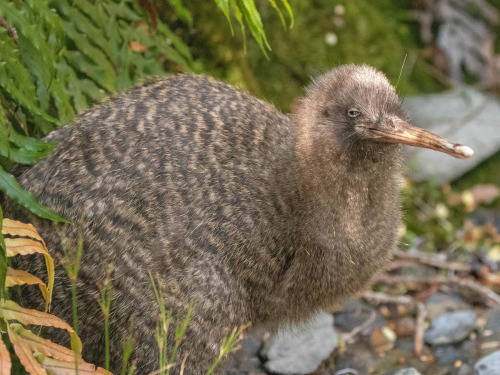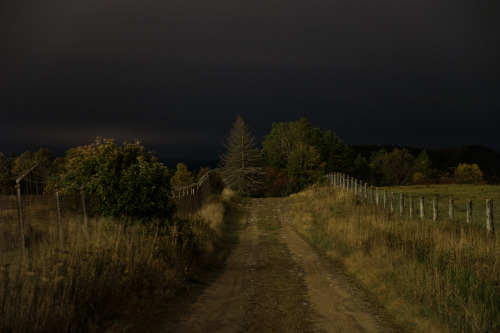Eyed Elaters (Alaus)
Eyed Elaters (Alaus)
eyed elater click beetles, like this Alaus oculatus from Florida, are the biggest click beetles (Elateridae) found in temperate North America.
Click beetles are best known for their eponymous clicking ability- a sort of elastic locking mechanism on their thorax can snap open with a loud clicking sound, which helps them startle or escape the grasp of predators and allows them to launch themselves into the air when overturned (you can see that in slow motion at the end of the video)



(more elating click beetle trivia below!)


They live around decaying trees and logs, the adults feeding on sap flows and other sugary liquids while the predatory grubs use their powerful jaws to tunnel in search of other wood-dwelling insect larvae to devour (by contrast many smaller click beetle larvae, often called wireworms, feed on rotting wood itself or other plant matter). To rear these beetles in captivity it’s necessary to keep the larvae in containers made of a hard material like glass, as they’ll chew through plastic and escape (I learned this the hard way the first time I found and attempted to raise a grub).
There are 6 Alaus species in the US, the largest of which can be over 5 cm long. Two are found in forests along the east coast- A. oculatus, the eastern eyed elater (below, left) and its smaller relative A. myops, the blind elater (right).


Even though the larvae don't feed directly on decaying wood, different Alaus species prefer different trees- oculatus breeds in dead oaks and other hardwoods, while myops found in the same habitats only use well-rotted pines.
More Posts from Goblin-in-the-rain and Others







Asian striped land leech, Haemadipsa guangchuanensis, Haemadipsidae
Photo 1 by dhfischer, 2-3 by daver, 4-5 by bentsai, and 6-7 by albertkang



㋡🥀
dried flowers..
I am just, a dumb little goblin. I cannot do Math. I just want to eat some leaves from the ground and befriend the rats .. maybe go rabid but that can wait
Animal of the Day!
Great Spotted Kiwi (Apteryx haastii)

(Photo by Max De Beer)
Conservation Status- Vulnerable
Habitat- Northern South Island of New Zealand
Size (Weight/Length)- 3 kg; 50 cm
Diet- Insects; Worms; Crayfish
Cool Facts- Kiwi’s got the shortest evolutionary stick. The great spotted kiwi is the largest kiwi species. These flightless birds are nocturnal and spend their days sleeping in burrows. Monogamous pairs are aggressive to other kiwi’s and humans alike, attempting to chase them away from burrows. If you thought human pregnancy was difficult, a female great spotted kiwi would laugh in your face. The egg makes up a fourth of a female’s body weight. The female has to survive on fat reserves as she does not eat the entire five month gestation period. As soon as the egg is laid, the male takes over the incubation process. Once the chick hatches, the parents leave it to fend for itself with no regrets. Invasive predators in a mix with habitat destruction have dropped the great spotted kiwi population by 45% in half a century.
Rating- 13/10 (The fruit was named after the bird.)

Leafy Sea Dragon (Phycodurus Eques)
Moth Of The Day #115
Magpie Moth
Nyctmera annulata
From the erebidae family. They have a wingspan of 35-50 mm. They tend to inhabit northern heather moorland but also fairly frequent in garden, allotments, hedgerows and woodland. They can be found mainly in New Zealand.



What’s up late night folks? Here’s an eerie shot I took down a pitch black road in the middle of the night
Source
I gave the beebs a jelly cup as a treat and pyramidhead stepped in it and got SO upset
-
 squibot liked this · 1 month ago
squibot liked this · 1 month ago -
 aikos-plastic-death liked this · 1 month ago
aikos-plastic-death liked this · 1 month ago -
 layindeadonthepavement reblogged this · 2 months ago
layindeadonthepavement reblogged this · 2 months ago -
 blender-charm liked this · 2 months ago
blender-charm liked this · 2 months ago -
 parsleysagerosemarytimemachine liked this · 2 months ago
parsleysagerosemarytimemachine liked this · 2 months ago -
 yeehawmachine liked this · 2 months ago
yeehawmachine liked this · 2 months ago -
 diapasondame liked this · 2 months ago
diapasondame liked this · 2 months ago -
 clickbeetle reblogged this · 2 months ago
clickbeetle reblogged this · 2 months ago -
 hypomanic-chaos liked this · 2 months ago
hypomanic-chaos liked this · 2 months ago -
 pueppielein liked this · 3 months ago
pueppielein liked this · 3 months ago -
 aaays-and-bees liked this · 3 months ago
aaays-and-bees liked this · 3 months ago -
 letsgethaunted liked this · 6 months ago
letsgethaunted liked this · 6 months ago -
 maverick-ornithography liked this · 8 months ago
maverick-ornithography liked this · 8 months ago -
 thereosheep liked this · 8 months ago
thereosheep liked this · 8 months ago -
 sitta-pusilla reblogged this · 8 months ago
sitta-pusilla reblogged this · 8 months ago -
 sitta-pusilla liked this · 8 months ago
sitta-pusilla liked this · 8 months ago -
 0dividedby0haha liked this · 8 months ago
0dividedby0haha liked this · 8 months ago -
 itsartlee liked this · 8 months ago
itsartlee liked this · 8 months ago -
 beetledee0 reblogged this · 8 months ago
beetledee0 reblogged this · 8 months ago -
 tuvwolf reblogged this · 8 months ago
tuvwolf reblogged this · 8 months ago -
 tuvwolf liked this · 8 months ago
tuvwolf liked this · 8 months ago -
 sumbug liked this · 9 months ago
sumbug liked this · 9 months ago -
 blue-reimu reblogged this · 10 months ago
blue-reimu reblogged this · 10 months ago -
 gunkbot liked this · 10 months ago
gunkbot liked this · 10 months ago -
 smulnsander reblogged this · 10 months ago
smulnsander reblogged this · 10 months ago -
 scarecrow-gender reblogged this · 10 months ago
scarecrow-gender reblogged this · 10 months ago -
 scarecrow-reblogs reblogged this · 10 months ago
scarecrow-reblogs reblogged this · 10 months ago -
 bewarethesnallygaster liked this · 1 year ago
bewarethesnallygaster liked this · 1 year ago -
 toffeechad liked this · 1 year ago
toffeechad liked this · 1 year ago -
 beetlescratch reblogged this · 1 year ago
beetlescratch reblogged this · 1 year ago -
 beetlescratch liked this · 1 year ago
beetlescratch liked this · 1 year ago -
 honeycomb-butch liked this · 1 year ago
honeycomb-butch liked this · 1 year ago -
 unclerippuascension reblogged this · 1 year ago
unclerippuascension reblogged this · 1 year ago -
 lizardofanarchy liked this · 1 year ago
lizardofanarchy liked this · 1 year ago -
 ghostieboii liked this · 1 year ago
ghostieboii liked this · 1 year ago -
 redmegarex reblogged this · 1 year ago
redmegarex reblogged this · 1 year ago -
 redmegarex liked this · 1 year ago
redmegarex liked this · 1 year ago -
 pandemoniumraven liked this · 1 year ago
pandemoniumraven liked this · 1 year ago -
 moonmilk3333 liked this · 1 year ago
moonmilk3333 liked this · 1 year ago -
 awesome-opossumm liked this · 1 year ago
awesome-opossumm liked this · 1 year ago -
 erinmccomics liked this · 1 year ago
erinmccomics liked this · 1 year ago -
 wikiascratchboy liked this · 1 year ago
wikiascratchboy liked this · 1 year ago -
 godssilliestgirl liked this · 1 year ago
godssilliestgirl liked this · 1 year ago -
 agreenseil liked this · 1 year ago
agreenseil liked this · 1 year ago -
 undeath1245 reblogged this · 1 year ago
undeath1245 reblogged this · 1 year ago -
 spideyladman liked this · 1 year ago
spideyladman liked this · 1 year ago

Hi it’s me puddleorganism if you’re confused why you got a billion hoops from me
298 posts